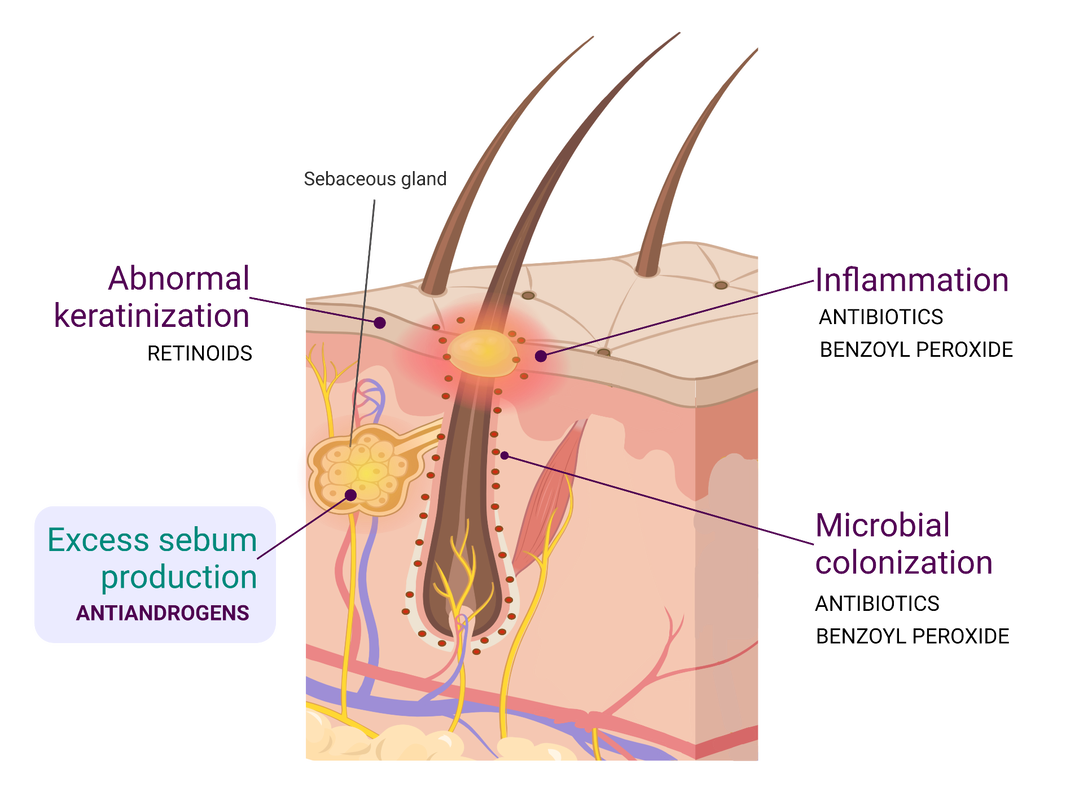Did you know that acne is the eight most common disease worldwide, affecting 10% of the global population? |
ADA-308 for acne
Acne
Acne is a multi-factorial disease in which androgen-driven excess sebum production is one of the contributing factors. Acne is a skin condition that affects the pilosebaceous units and appears when pores become clogged, inflamed, and swollen. Whiteheads, blackheads (comedones), and pimples (papules or pustules) are typical acne symptoms. Although acne primarily affects the skin on the face, some patients also experience symptoms on their neck and upper body. If left untreated, severe acne may result in permanent skin damage and scarring. Acne can significantly diminish a patient's quality of life and sense of self-esteem, as well as cause depression and social withdrawal.
Treatment options
The pathogenesis of acne involves four main pathways, all of which are targets of medical intervention (See image below). Androgen-driven excess sebum production can be counteracted by antiandrogens. Vitamin A derivatives, retinoids normalize skin shedding and thus inhibit obstruction of pores. Antibiotics and antiseptics, like benzoyl peroxide kill bacteria and reduce inflammation.
Antiandrogens in acne treatment: Systemic vs locally acting antiandrogens
Hormonal therapies are under-represented treatment option in acne due to antiandrogenic side effects of oral antiandrogens restricting their use to female patients. The therapeutic effect of antiandrogen is non-debatable, which is underlined using combined oral contraceptive pills in the treatment of acne and off-label use of oral anti-androgens. Topical antiandrogen will be a much-needed novel treatment option for acne.
Paragraph. Muokkaa napsauttamalla tätä.


